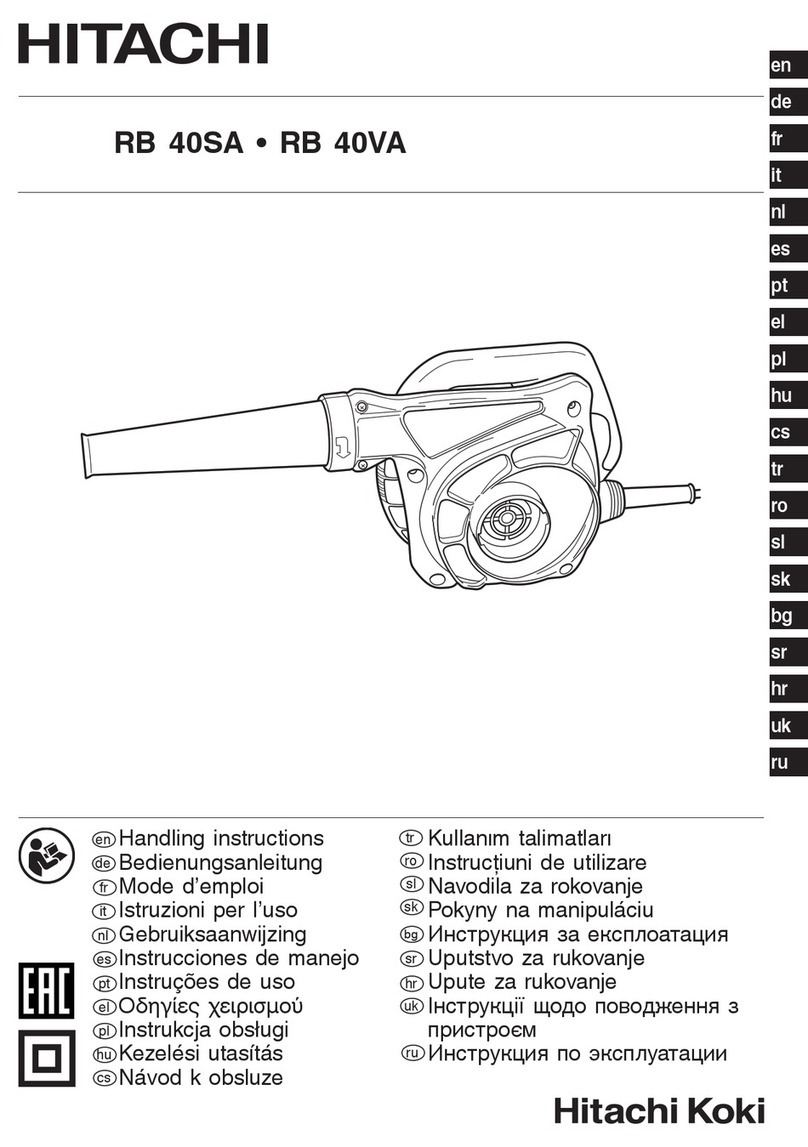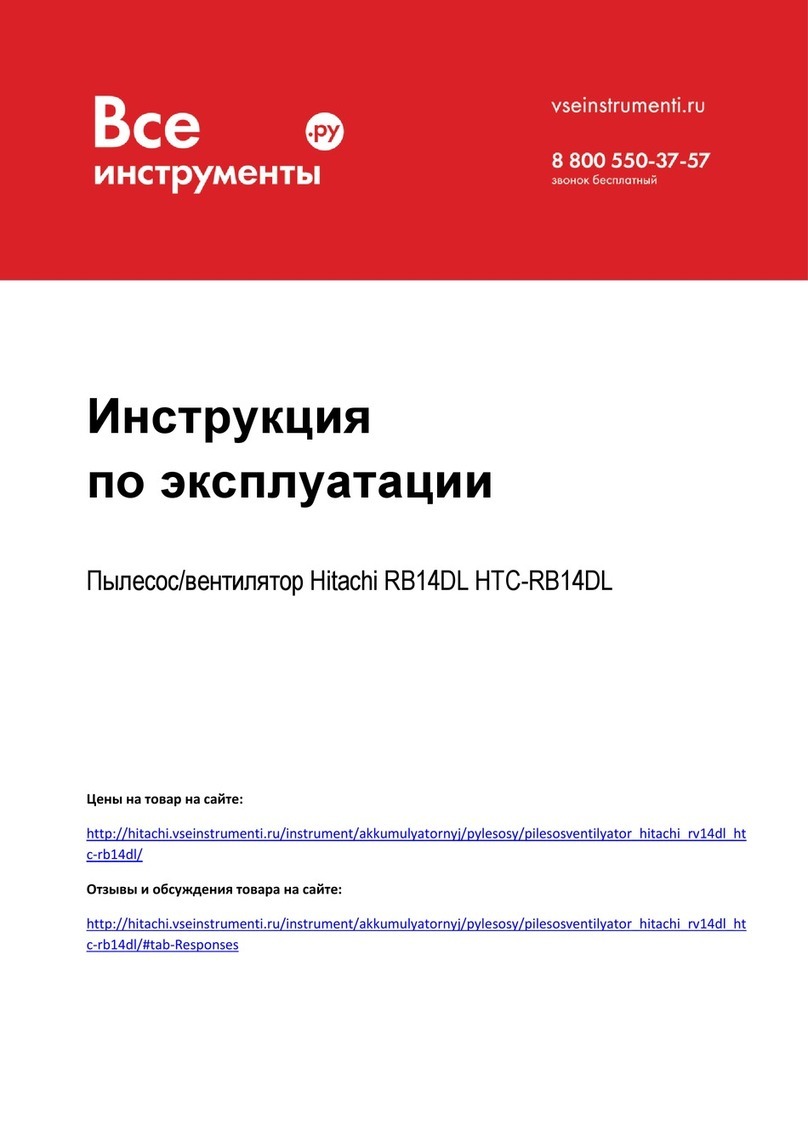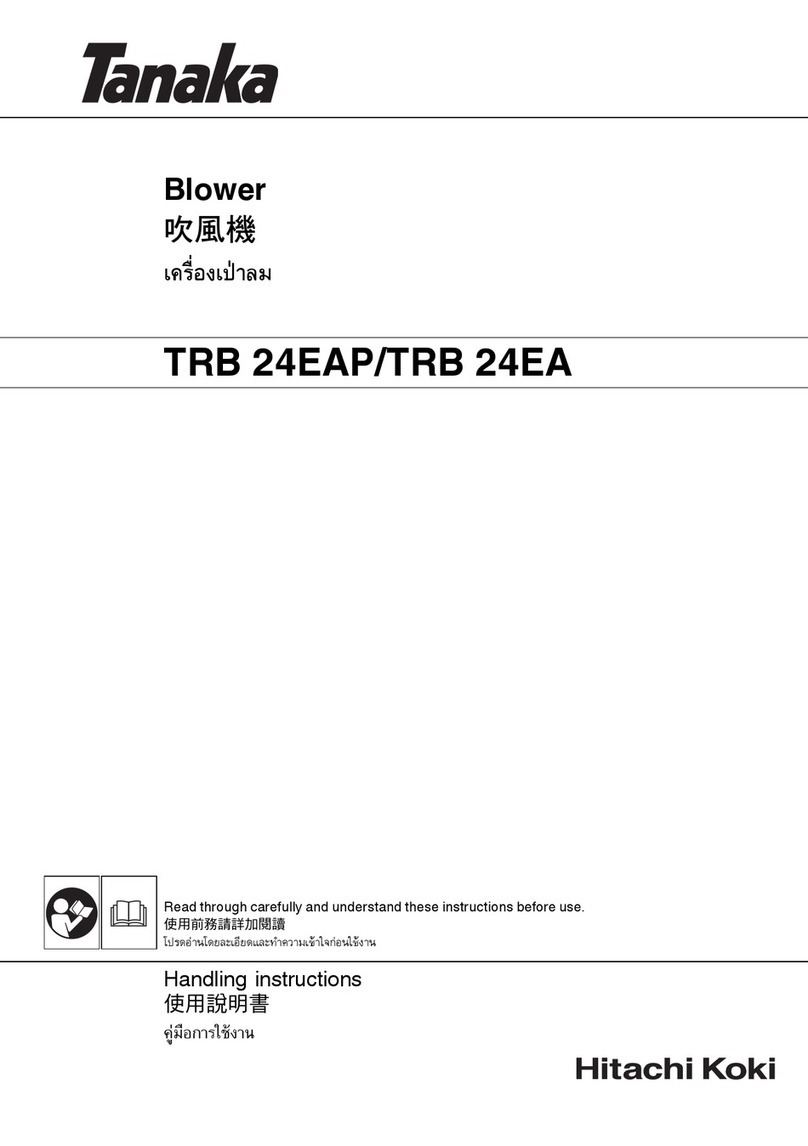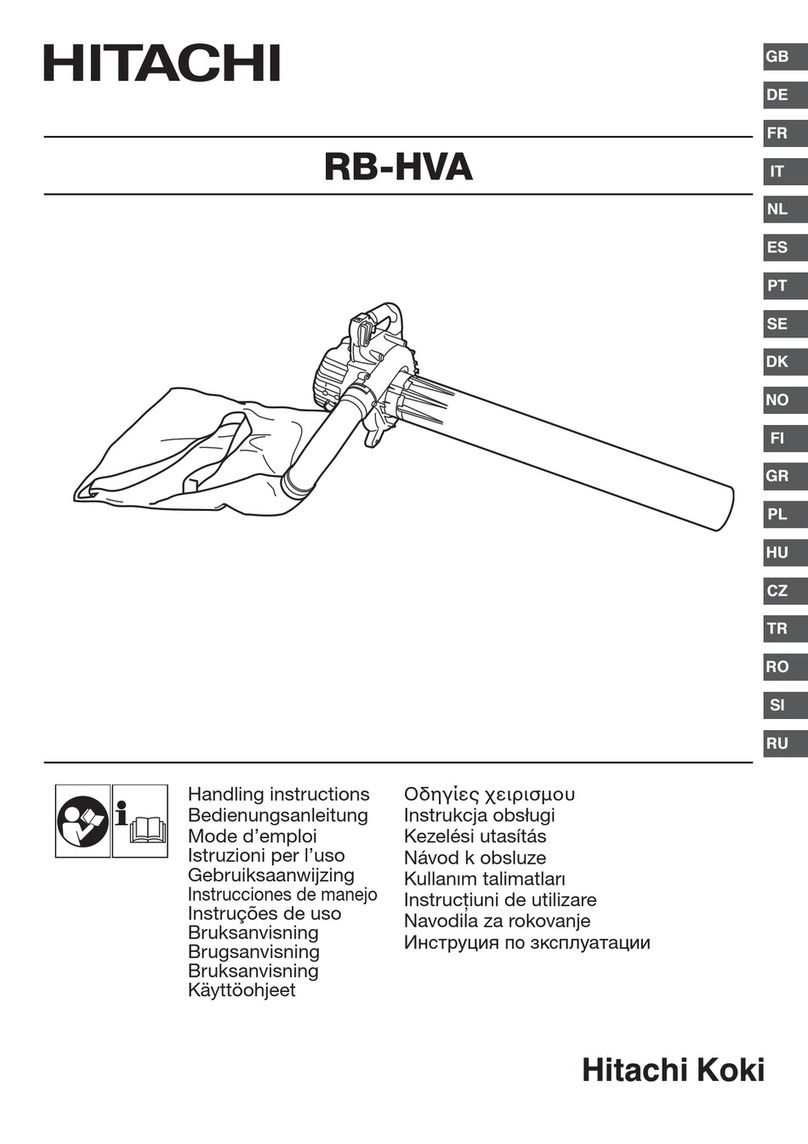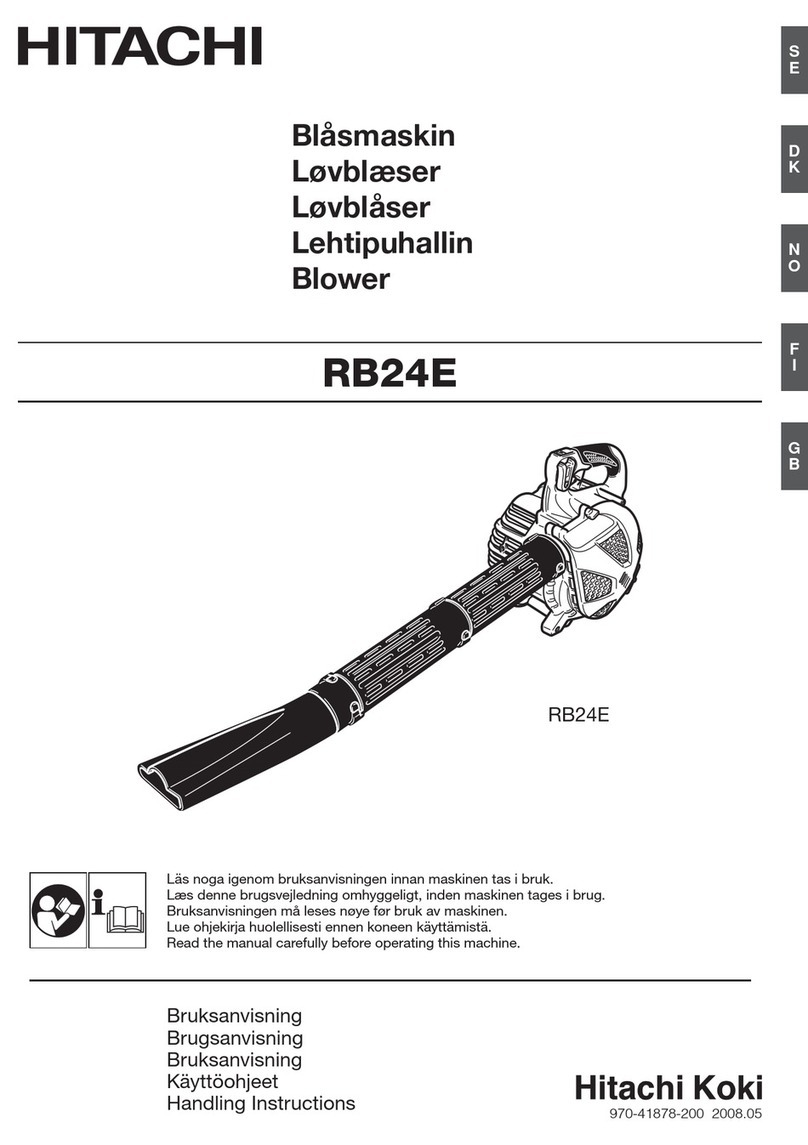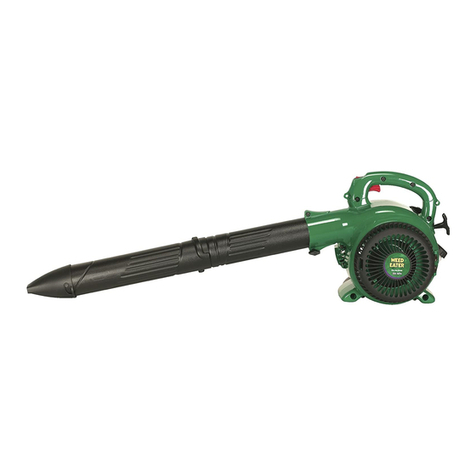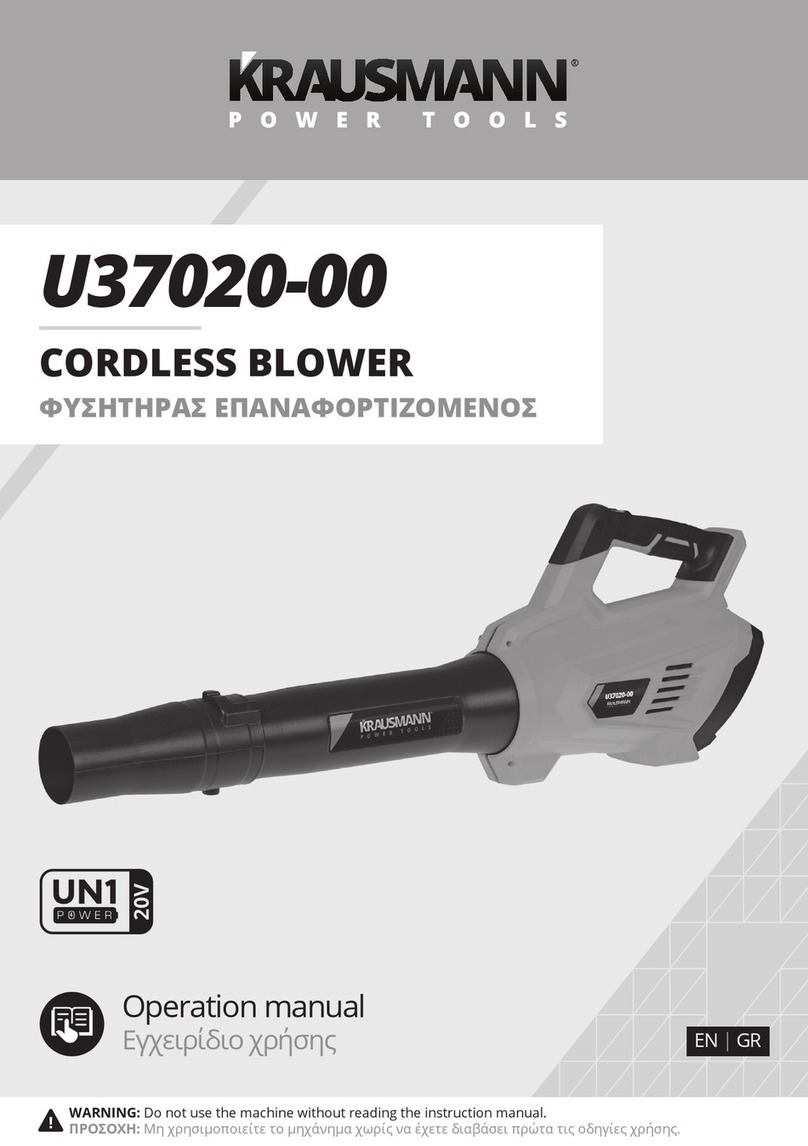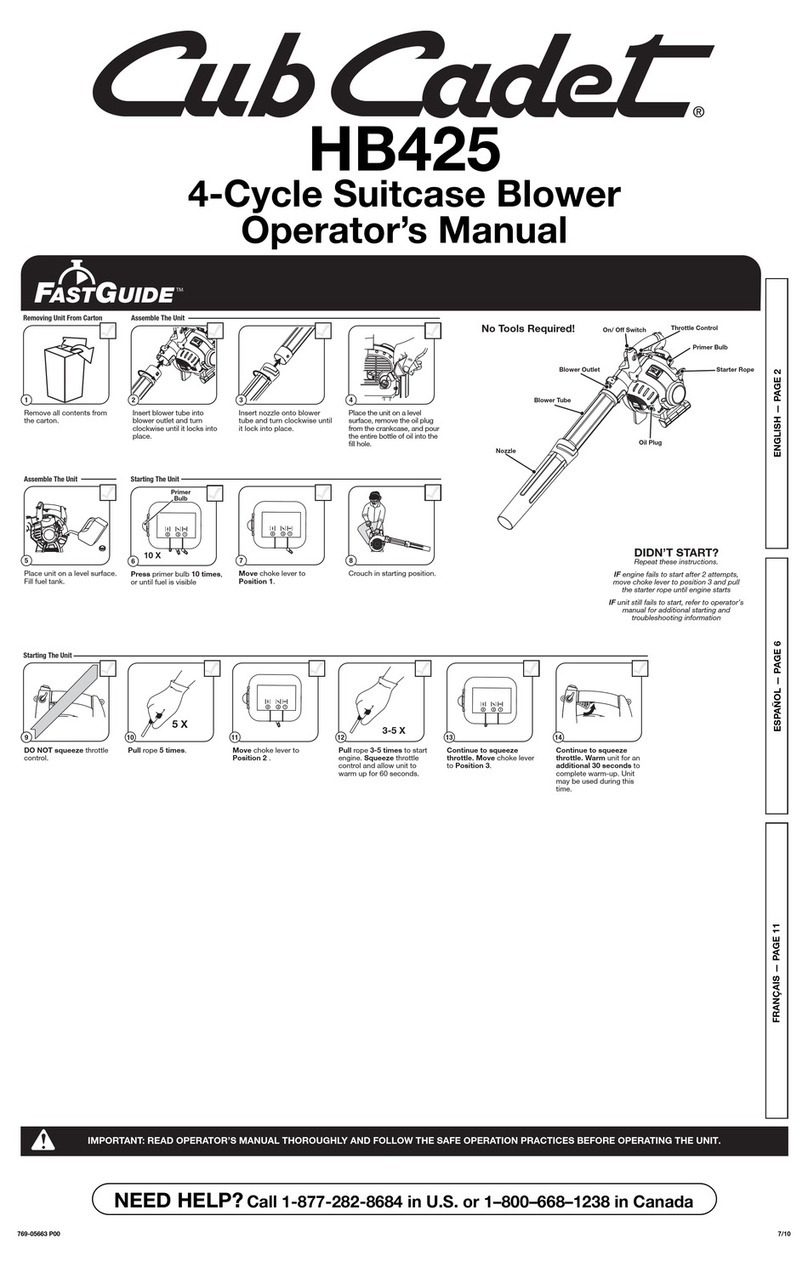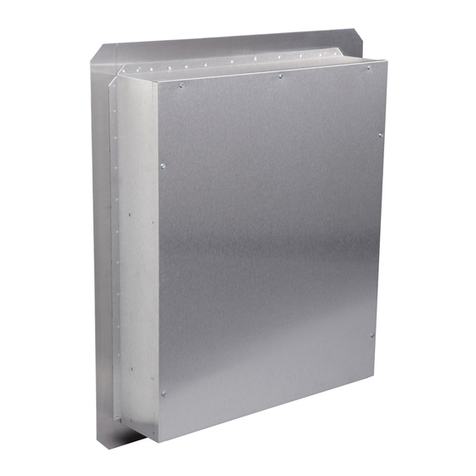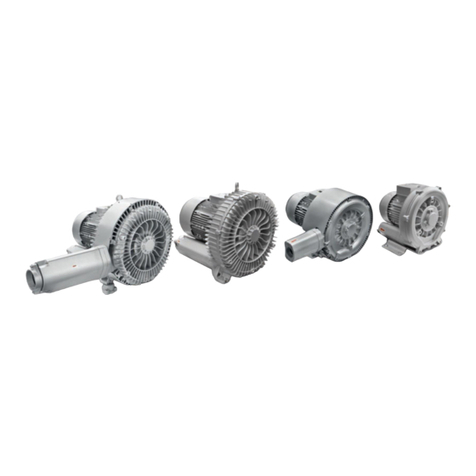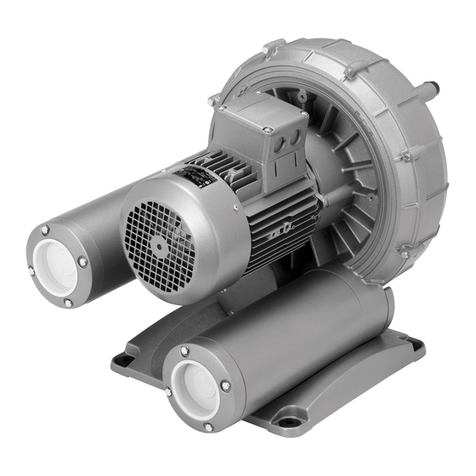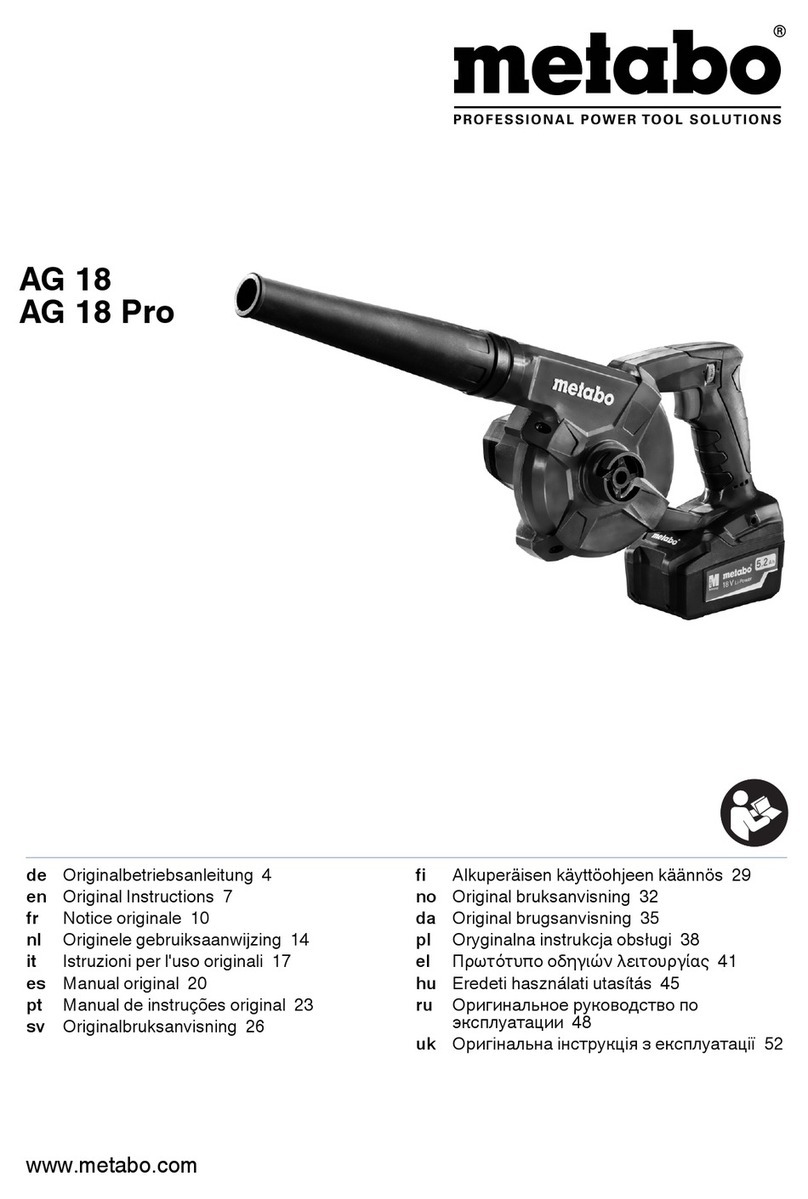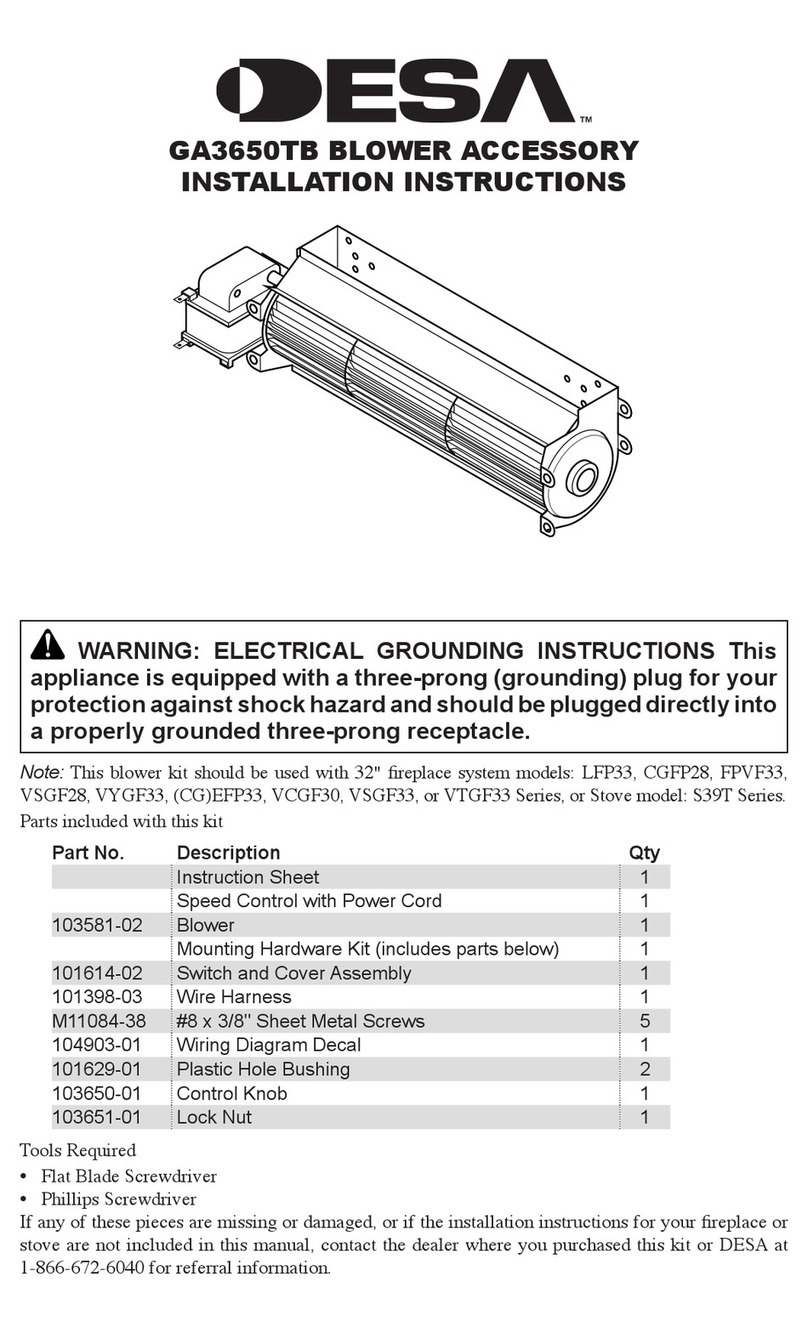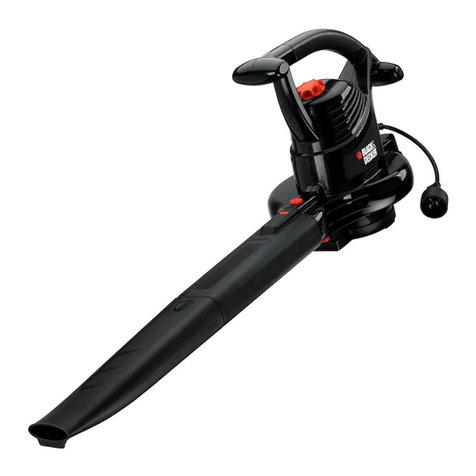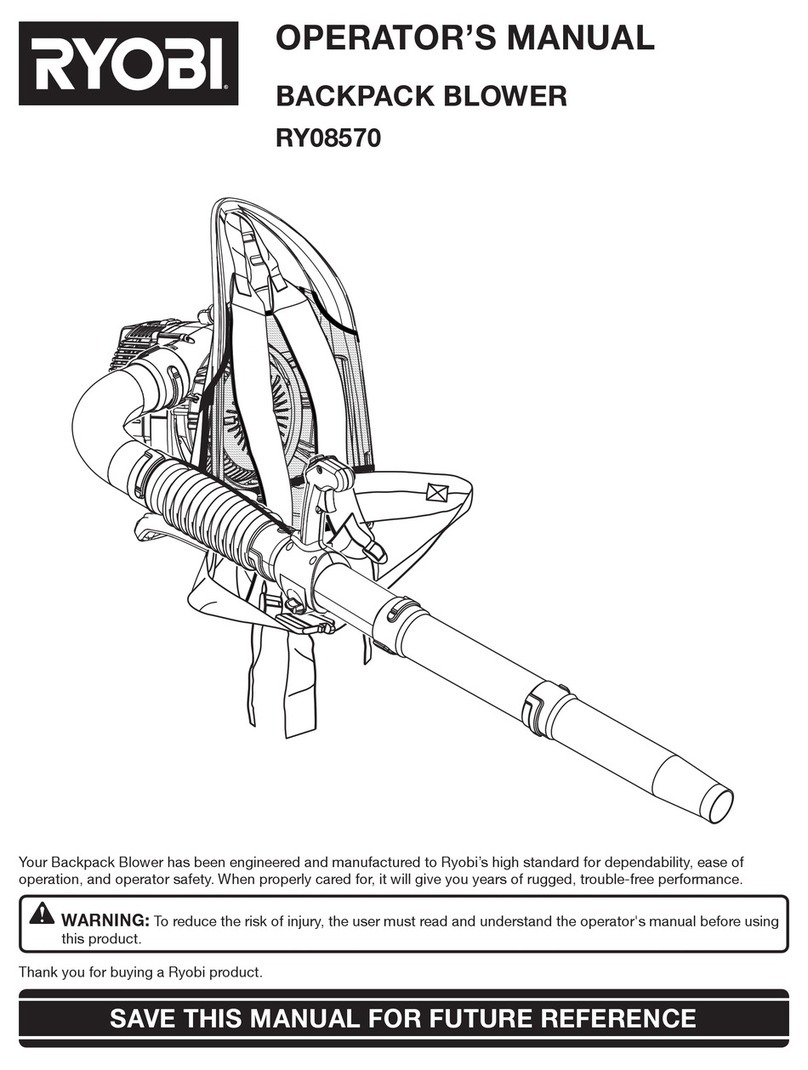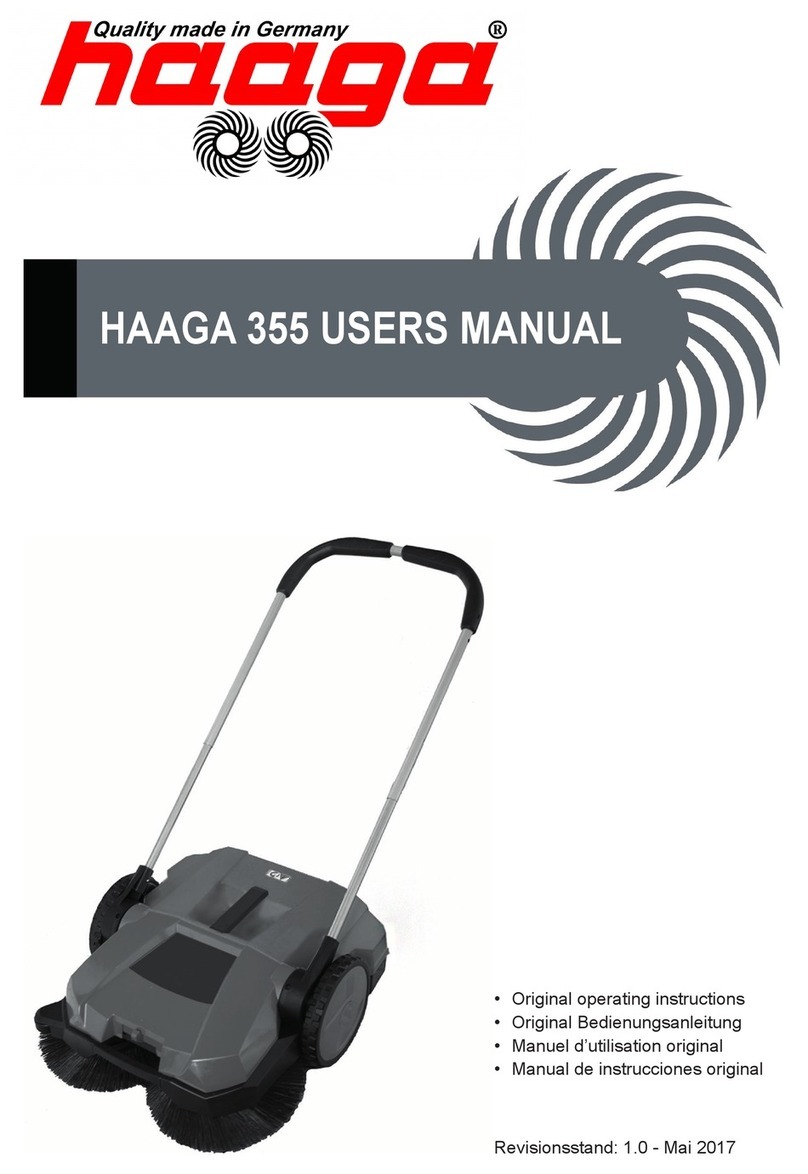
9
WARNINGS AND SAFETY INSTRUCTIONS
Operator safety
○A dust filter mask should be worn during operation.
○Always wear a safety face shield or goggles.
○Always wear heavy, long pants, boots and gloves. Do not wear
loose clothing, jewelry, short pants, sandals or go barefoot.
Secure hair so it is above shoulder length.
○Do not operate this tool when you are tired, ill or under the
influence of alcohol, drugs or medication.
○Never let a child or inexperienced person operate the machine.
○Wear hearing protection. Pay attention to your surroundings.
Be aware of any bystanders who may be signaling a problem.
Remove safety equipment immediately upon shutting off
engine.
○Wear head protection.
○Never start or run the engine inside a closed room or building.
Breathing exhaust fumes can kill.
○Keep handles free of oil and fuel.
○Keep hands away from moving part or heated area.
○Do not grab or hold the unit by the blow pipe.
○When the unit is turned offmake sure the engine has stopped
before the unit is set down.
○When operation is prolonged, take a break from time to time
so that you may avoid possible Hand-Arm Vibration Syndrome
(HAVS) which is caused by vibration.
WARNING
○Antivibration systems do not guarantee that you will not sustain
Hand-Arm Vibration Syndrome or carpal tunnel syndrome.
Therefore, continual and regular users should monitor closely
the condition of their hands and fingers. If any symptoms of the
above appear, seek medical advice immediately.
○If you are using any medical electric/electronic devices such
as a pacemaker, consult your physician as well as the device
manufacturer prior to operating any power equipment.
Unit/machine safety
○Inspect the entire unit/machine before each use. Replace
damaged parts. Check for fuel leaks and make sure all
fasteners are in place and securely tightened.
○Replace parts that are cracked, chipped or damaged in any way
before using the unit/machine.
○Make sure the safety guard is properly attached.
○Keep others away when making carburetor adjustments.
○Use only accessories as recommended for this unit/machine by
the manufacturer.
WARNING
Never modify the unit/machine in any way. Do not use your unit/
machine for any job except that for which it is intended.
Fuel safety
○Fuel contains highly flammable and it is possible to get the
serious personal injury when inhaling or spilling on your body.
Always pay attention when handling fuel. Always have good
ventilation when handling fuel inside building.
○Mix and pour fuel outdoors and where there are no sparks or
flames.
○Use a container approved for fuel.
○Do not smoke or allow smoking near fuel or the unit/machine or
while using the unit/machine.
○Wipe up all fuel spills before starting engine.
○Move at least 3 m away from fueling site before starting engine.
○Stop engine before removing fuel cap.
○Empty the fuel tank before storing the unit/machine. It is
recommended that the fuel be emptied after each use. If fuel is
left in the tank, store so fuel will not leak.
○Store unit/machine and fuel in area where fuel vapors cannot
reach sparks or open flames from water heaters, electric motors
or switches, furnaces, etc.
WARNING
Fuel is easy to ignite or get explosion or inhale fumes, so that
pay special attention when handling or filling fuel.
Blowing safety
○Operate unit/machine only at reasonable hours – not
early in the morning or late at night when people might be
disturbed. Comply with times listed in local ordinances. Usual
recommendations are 9:00 a.m. to 5:00 p.m., Monday through
Saturday.
○Never direct discharge of air toward bystanders nor allow
anyone near the area of operation. Use care in directing
discharge to avoid glass enclosures, automobiles, etc.
○Stay alert for uneven sidewalks, holes in terrain or other
unstable condition when using the tool.
○Take all possible precautions when leaving the tool unattended
such as stopping the engine.
○Never operate the tool without guards, blow pipes or other
protective device in place. (If so equipped.)
○Keep others including children, animals, bystanders and
helpers outside the 15 m hazard zone. Stop the engine
immediately if you are approached.
○Always keep the engine on the right side of your body.
○Keep firm footing and balance. Do not over-reach.
○Keep all parts of your body away from the muffler.
○Always carry a first-aid kit when operating any power
equipment.
○Never start or run the engine inside a closed room or building
and/or near inflammable liquids. Breathing exhaust fumes can
kill.
Maintenance safety
○Maintain the unit/machine according to recommended
procedures.
○Disconnect the spark plug before performing maintenance
except for carburetor adjustments.
○Keep others away when making carburetor adjustments.
○Use only genuine Hitachi replacement parts as recommended
by the manufacturer.
CAUTION
Do not disassemble the recoil starter. You may get a possibility
of personal injury with recoil spring.
Transport and storage
○Carry the unit/machine by hand with the engine stopped and
the muffler away from your body.
○Allow the engine to cool, empty the fuel tank, and secure the
unit/machine before storing or transporting in a vehicle.
○Empty the fuel tank before storing the unit/machine. It is
recommended that the fuel be emptied after each use. If fuel is
left in the tank, store so fuel will not leak.
○Store unit/machine out of the reach of children.
○Clean and maintain the unit carefully and store it in a dry place.
○Make sure engine switch is offwhen transporting or storing.
If situations occur which are not covered in this manual, take care
and use common sense. Contact your Hitachi dealer if you need
assistance. Pay special attention to statements preceded by the
following words:
WARNING
Indicates a strong possibility of severe personal injury or loss of
life, if instructions are not followed.
CAUTION
Indicates a possibility of personal injury or equipment damage,
if instructions are not followed.
NOTE
Helpful information for correct function and use.
000BookRB24EAPChS.indb9000BookRB24EAPChS.indb9 2010/06/1812:06:592010/06/1812:06:59
